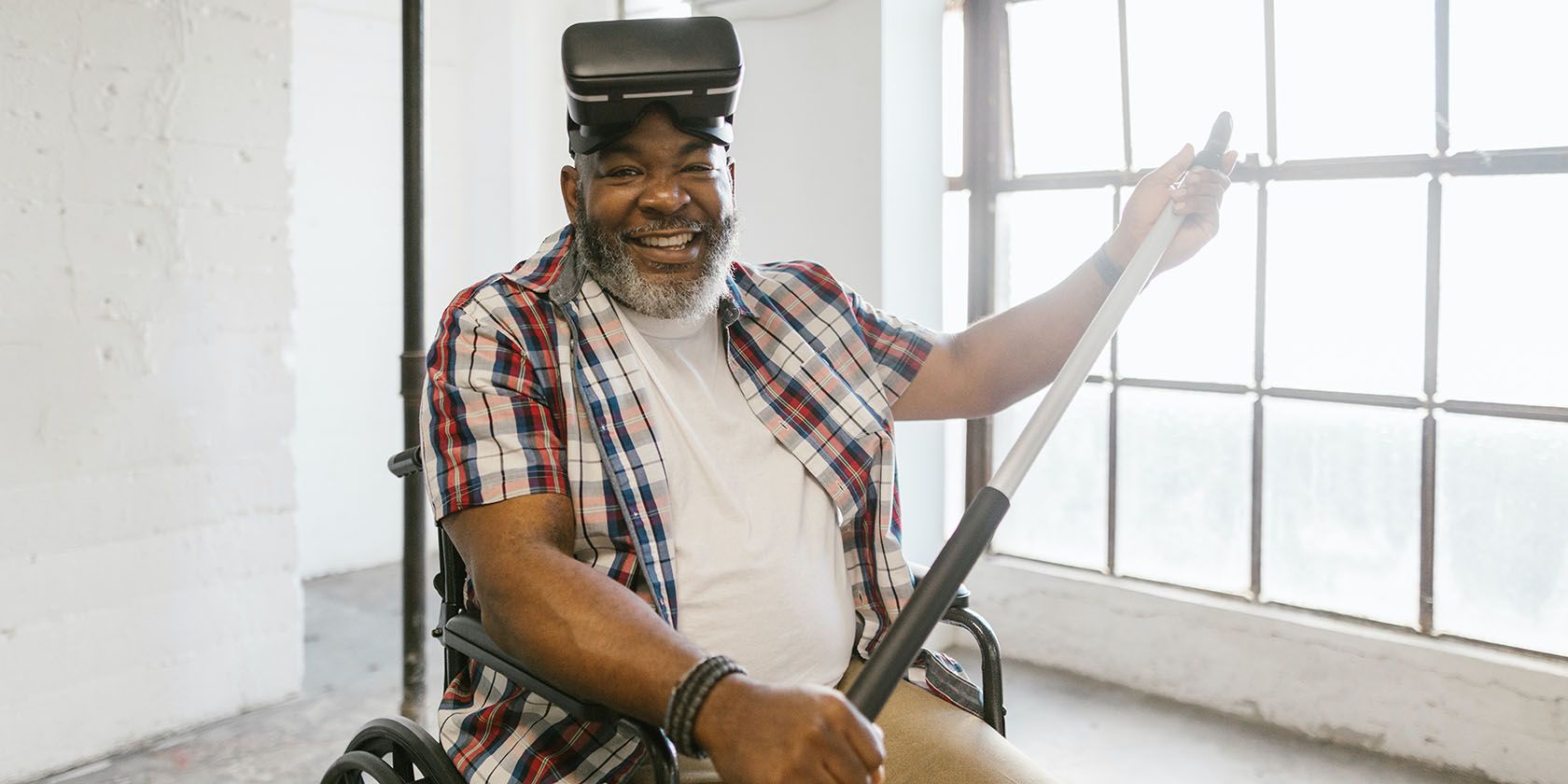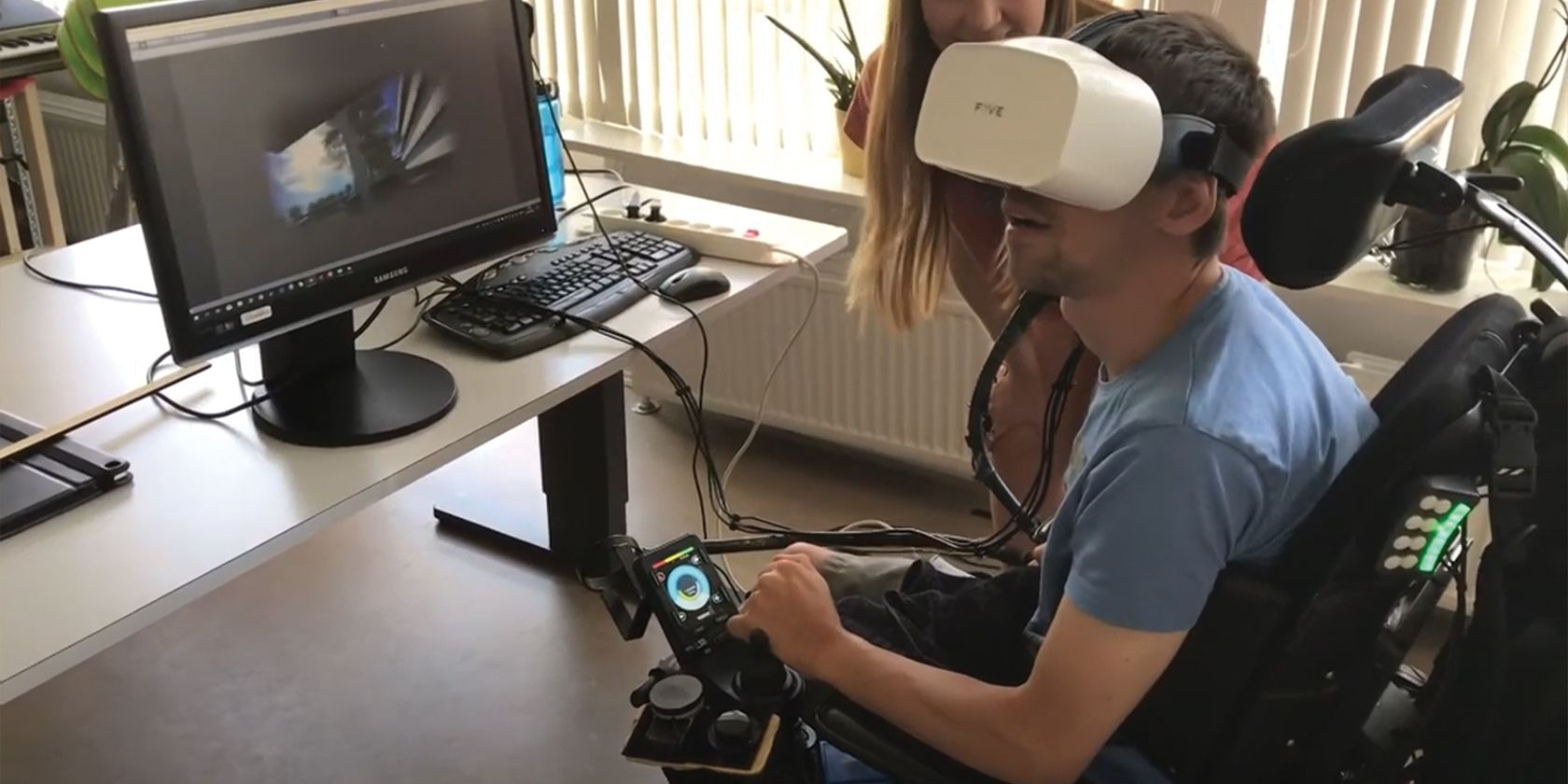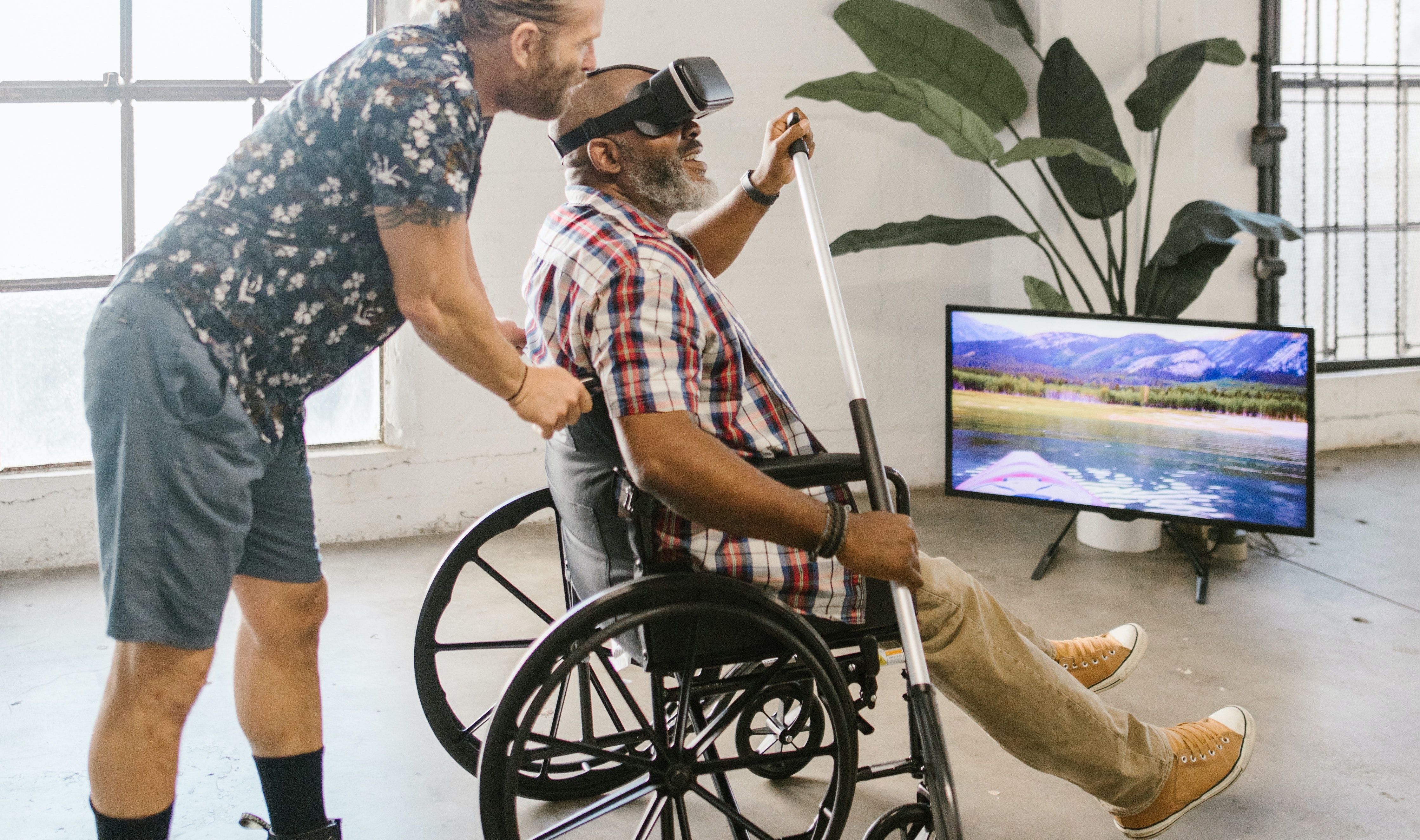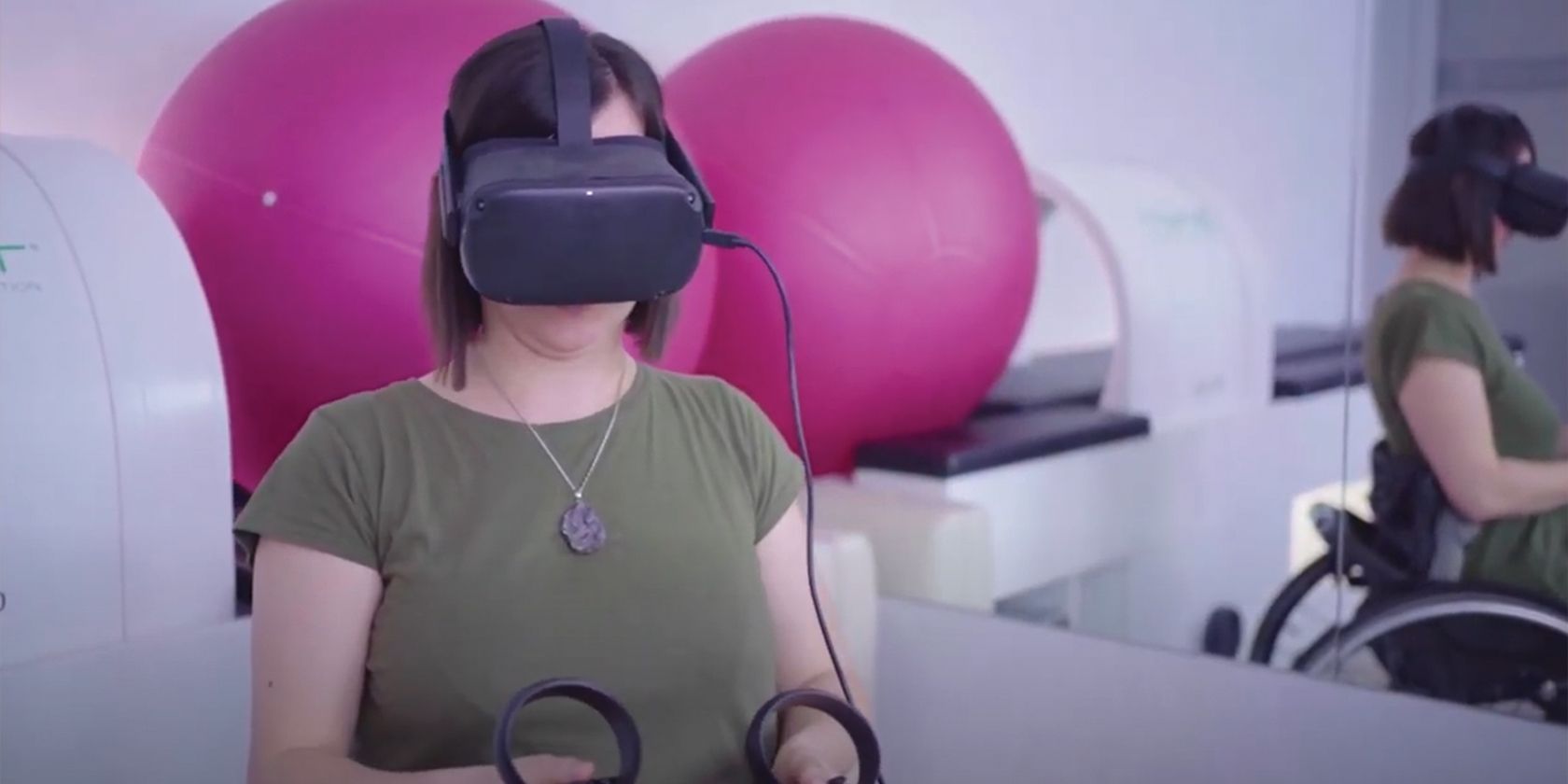Virtual reality has a wide range of uses; primarily for enjoyment. But how can you fully enjoy VR if you're not fully mobile, particularly if you are in a wheelchair? There are several ways to make VR easier for those in wheelchairs to access.
So, how does virtual reality fit into the lives of people with mobility issues? Here's how it can be of assistance to those in wheelchairs, and how to make experiencing VR easier for wheelchair users.
The Benefits of Virtual Reality for Wheelchair-Bound People
There are several benefits that people with mobility issues can have with virtual reality. Here are some of them.
Mental Health
When people become physically disabled for the first time, it can be an overwhelming experience. There’s a lot of stress and confusion during the initial stages of learning to use and trust your body again.
For the temporarily disabled, virtual reality can help renew a sense of hope. It can give them a relaxing activity wherein their lack of mobility doesn’t significantly impair their ability to have a remarkable experience. In fact, virtual reality is a great way to feel part of an activity without feeling like you’re different from everyone.
Medical Treatment
In 2018, the National Library of Medicine published a study showing findings from virtual reality in medical education to teach empathy. Using immersive VR, health professionals were able to simulate the experience of patient illnesses. With VR, able-bodied individuals can experience what it is like to lose mobility, which helps push the importance of creating inclusive experiences spaces in general.
According to another study by the St. George’s Hospital in London, 100% of patients exposed to calming scenes in VR before a surgery reported an improved experience. In fact, 80% of the patients in the study reported less pain and 73% reported being less anxious. For wheelchair-bound individuals who may undergo a never-ending series of surgeries, VR may just be the breath of fresh air they need.
New Experiences
When thinking about the life of a person with full mobility, they don't experience many of their outstanding moments confined to sitting down. Unfortunately, this means that many disabled people don't have the same access to opportunities to explore.
With virtual reality, a wheelchair doesn’t need to stop you from virtually climbing mountains, seeing the world's best museums, or even going to space. In recent times, it is also possible to see experiences like conferences and concerts through VR as well.
Practical Tracking
One of the biggest problems that wheelchair-bound people experience is not knowing if all the places they are heading off to are accessible. For this reason, we can also use VR to help wheelchair users plan routes in and around places like shopping centers, transit stations, amusement parks, and so on.
With VR, it’s possible to check places in advance if there are accessible parking, ramps, toilets, and elevators. Not only will this help ease the anxiety of unknown places, but it also helps people looking after wheelchair users effectively prepare for activities to reduce discomfort.
Tips to Make VR Gaming Wheelchair-Accessible
Besides all the other benefits, virtual reality is also something fun. We shouldn't rob people, living with reduced mobility, the opportunity to take part in the fun. If you wonder how to make VR gaming work for a wheelchair user you care about, here are some tips that you can follow to make your VR set up wheelchair-accessible.
Adjust Your Camera and Game Settings
It will surprise you how many popular VR games can still work well even when you’re sitting down. However, the default camera and game settings for VR that still use motion capture often have the average standing height of people in mind.
To mitigate this, adjust your camera and game settings to consider the appropriate sitting height. Alternatively, you can also invest in VR equipment like the Oculus Rift series, which can work without additional calibration.
Choose Games with Front-Facing Action
While the 360-degree experience is one hallmark of immersive VR entertainment, it can challenge wheelchair users who sometimes only see 180 degrees without maneuvering their wheelchair.
For this reason, it’s best to choose games with most of the action being front-facing. With this, they can still experience VR without feeling like they’re impaired by their inability to look behind them.
Use VR Game Adaptive Software
If you don’t want the trouble of having to manually purchase without knowing if they’re wheelchair-compatible or not, you can also use VR adaptive software like WalkinVR. Using WalkinVR, wheelchair-bound players who also struggle with pressing buttons on controllers like people with cerebral palsy, spinal muscular atrophy, or muscular dystrophy, can still play.
Using gameplay assistance, WalkinVR emulates the VR controller’s buttons with the assistance of another person. Aside from this, it can also help compensate for movement restrictions and allow devices to detect hands, which helps people who also can't use controllers.
Invest in VR Peripherals
There are many types of wheelchair-bound disabilities. While some people still retain some form of mobility on either leg, there are also people who can’t move their legs at all. If your mobility is limited, but you’re not completely paraplegic, you can opt to invest in VR peripherals that mimic what natural motion you’re capable of. Not only is this a form of good exercise, but it also helps build confidence with the other parts of your body.
For example, UnlimitedHand is a prime band which uses haptic response technology and simulate your hand moments inside the VR world. If you can use at least one foot, you can make use of devices like 3DRudder, which acts like a virtual foot pad that simulate movement with a single foot.
Accessibility Challenges with Virtual Reality
Virtual reality has come quite a long way since it has become commercially available. As time passes, VR technology has become more affordable and easy to use. However, even for people with full mobility, the current state of VR technology still has several limitations.
Currently, VR peripherals can still not replicate the sensation of natural movement perfectly. When not hooked up to dozens of wires, the best portable VR devices still struggle with the length of battery life.
With this in mind, it’s no wonder that VR for disabled people still has a long way to go. However, as the market for virtual reality consistently expands, so will the experience that allows for better accessibility.
Thankfully, we’re likely to see positive developments improve in the years to come. For now, you can try the tips above to make sure that a wheelchair doesn’t stop you from living your best (virtual) life.




